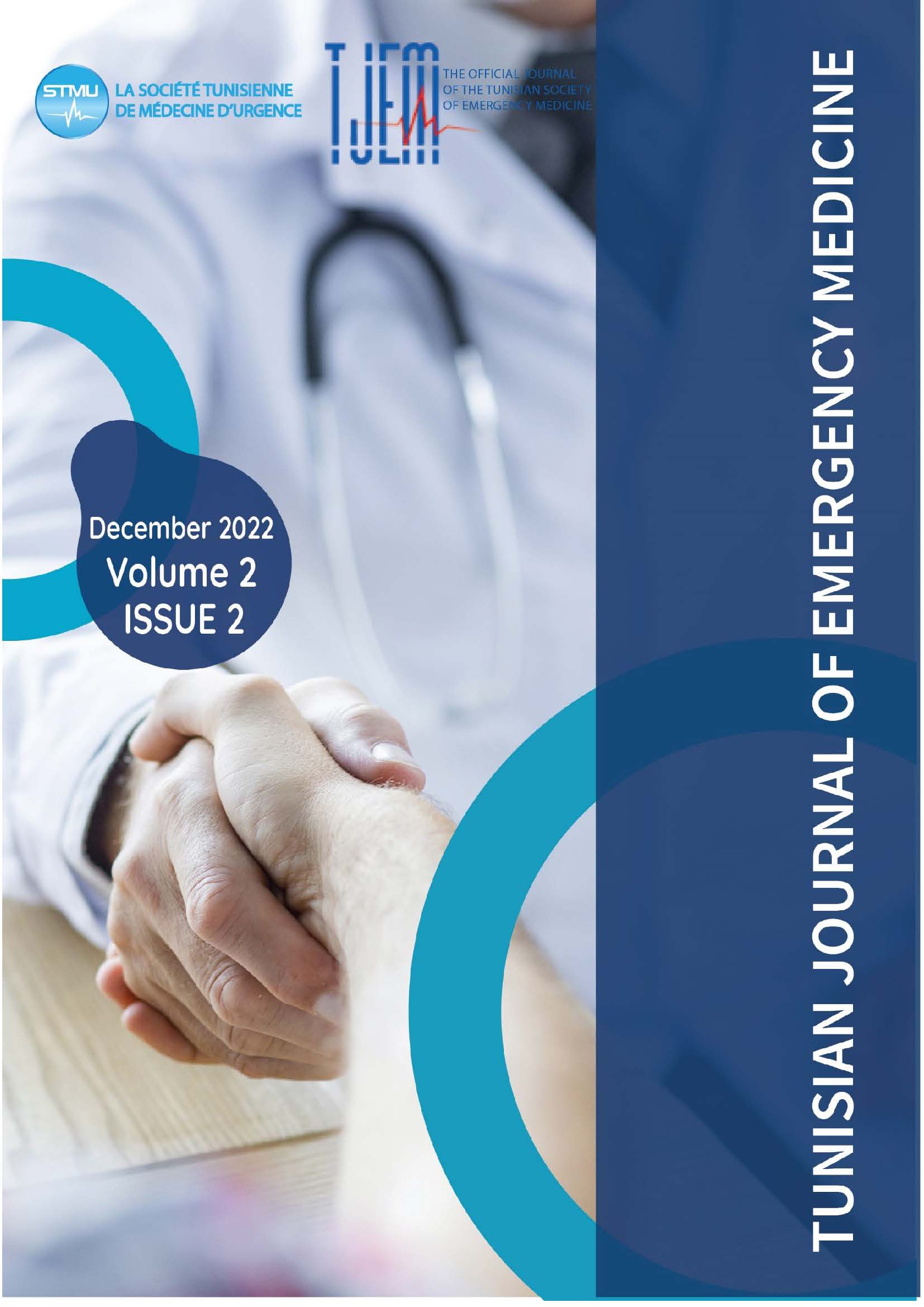A new practical score for early diagnosis of appendicitis in the emergency department
Rahma JABALLAH; Hajer YAAKOUBI; Lotfi BOUKADIDA; Rym YOUSSEF; R KADDACHI; H BEN SALAH; Asma ZORGATI; Riadh BOUKEF
- Authors
-
-
Rahma JABALLAH
Sahloul Emergency Department. Sousse. Tunisia ,
-
- Keywords:
- Appendicitis, Emergency department, Clinical Score, Predictive Factors
- Abstract
-
Background: Acute abdominal pain is the most common complaint encountered in the emergency department. Appendicle pathology, the most frequent cause of this acute abdominal pain, can be extremely challenging to identify, requiring laboratory testing, and layered diagnostic imaging. In this case, clinical scoring systems can be helpful.
The purpose of this study is to develop and validate a new predictive score based on clinical and laboratory variables that can help the physician to identify patients at high or low risk for appendicitis in the emergency department.
Materials and methods: This study was designed as a prospective one-year study from January to December 2017 and included 200 patients older than 16 years admitted to the emergency department with abdominal pain indicating acute appendicitis. The final diagnosis of acute appendicitis was provided by the specific examination of the surgical specimen. Statistical analysis was performed using SPSS version 21. A score was derived from a multiple regression analysis. The ROC curve was obtained from which the appropriate cut-off value was identified for dichotomization.
Results: There were 200 patients enrolled in this study divided into two groups: 97 were diagnosed with of 7 variables: WBC count > 10,000 (2 points), tenderness in RLQ (2 points), migration of pain from the epigastrium to the RLQ (2 points), a positive Blumberg sign (1 point), a positive Rovsing sign (1 point), a sensible abdomen (2
The discrimination power of the constructed score was good (area under the receiver operating characteristic curve= .937), even better than the Alvarado score (area under the ROC curve=.887). Our score performed well (P = .88). The score has good sensitivity and negative predictive value at a cutoff value of 4.
Conclusion: bio-clinical scores can be used as a basis for a structured algorithm for the management of patients consulting for abdominal pain, several scores have been developed (Alvarado, Andersson, François ...) but this is not common practice. In this study, we have developed a new clinical-biological predictive score (SAAS score) for acute appendicitis which is practical and easy but it remains to be validated in external centers. - Downloads
- Published
- 12-12-2022
- Section
- Prospective study
- License
-
Copyright (c) 2022 Tunisian Journal of Emergency Medicine

This work is licensed under a Creative Commons Attribution-NonCommercial-ShareAlike 4.0 International License.


